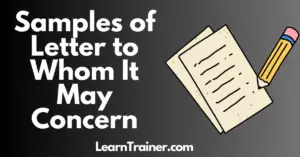Have you ever found yourself staring at a flooded car, wondering if your insurance will cover the damage?
You’re not alone! Many people don’t realize what their auto insurance covers until it’s too late, and floods can cause unexpected and devastating damage to vehicles.
Whether you’ve experienced a flood yourself or simply want to understand how flood damage to cars is handled by insurance, this post will guide you through everything you need to know.
In this article, we’ll break down how auto insurance policies work when it comes to flood damage, what to do if your car is flooded, and how to ensure you’re properly covered in the future. Let’s dive in!
Types of Auto Insurance Coverage and How They Relate to Flood Damage
Before diving into the specifics of flood damage, it’s important to understand the basic types of auto insurance coverage. Most car insurance policies include several types of coverage, but not all of them are the same when it comes to flood damage.
Here are the most common types of car insurance:
| Type of Coverage | What It Covers | Does It Cover Flood Damage? |
| Liability Coverage | Damage to other vehicles or property caused by you. | No, it doesn’t cover flood damage. |
| Collision Coverage | Damage to your own vehicle resulting from a collision. | No, it doesn’t cover flood damage. |
| Comprehensive Coverage | Damage from events like theft, fire, or weather-related incidents. | Yes, it covers flood damage. |
Does Comprehensive Insurance Cover Flood Damage?
When it comes to flood damage, the key word is comprehensive insurance. Comprehensive insurance is designed to cover damages to your car caused by incidents outside of your control, including natural disasters like floods, hail, or fallen trees.
If you have comprehensive coverage on your auto insurance policy, then flood damage will likely be covered, but it’s important to check with your insurance provider to confirm. In some cases, there might be exceptions or conditions that apply to flood damage claims.
For example, if your car was not submerged in the floodwaters but only partially exposed to heavy rain, some insurance providers may argue that the damage is not covered under comprehensive insurance. On the other hand, if your car is completely flooded or submerged, you’re likely to be covered.
Steps to Take After Your Car Is Flooded
If your car has been damaged by a flood, it’s crucial to act quickly. Here are the steps you should take:
- Assess the Damage
Don’t start the engine! Even if your car looks fine from the outside, water can wreak havoc on the internal components. Floodwater can cause damage to the engine, electrical systems, brakes, and more. Make sure to assess the severity of the damage, and take pictures of your car for your insurance claim. - Contact Your Insurance Company
Reach out to your insurance company as soon as possible to inform them about the flood damage. Your insurer will guide you through the claims process and may send an adjuster to assess the damages. - Document the Incident
Take clear photos of the damage, including the floodwaters around your car, if possible. This will be helpful for your insurance claim. - Towing and Repairs
If your car is inoperable, you may need to have it towed to a repair shop. Be sure to keep records of towing expenses, repair estimates, and any other relevant information. - Get an Estimate
A professional mechanic or repair shop will need to assess your car to determine the extent of the damage. This is a critical step in the claims process. Make sure to get an estimate in writing. - File the Claim
Submit all the necessary documents and information to your insurance company. This typically includes your photos, the repair estimate, and a detailed explanation of the flood’s impact on your car. - Follow Up
Stay in regular contact with your insurer to ensure that the claim is processed in a timely manner. If necessary, escalate the claim if you feel it’s being delayed or mishandled.
Common Mistakes to Avoid When Filing a Flood Damage Insurance Claim
When it comes to dealing with flood damage to your car, there are a few common mistakes you’ll want to avoid:
- Not Having Comprehensive Coverage
If you don’t have comprehensive coverage, flood damage will likely not be covered by your insurance. Always review your policy and make sure you have the right coverage for weather-related incidents. - Starting the Car After It’s Been Flooded
This is a huge mistake! If your car has been flooded, starting the engine could cause severe damage to the engine and other systems. Even if the car looks fine, water could have entered critical areas. Always have your car professionally assessed before trying to start it. - Delaying Your Claim
It’s easy to feel overwhelmed after a flood, but delaying your claim can complicate the process. Insurance companies typically have a specific window in which claims must be filed. Contact your insurer immediately after the incident. - Not Documenting the Damage Thoroughly
Failing to take clear photos and document the flood damage in detail can result in a denied or delayed claim. Always take photos of everything, from the water levels to any damages to your car. - Not Understanding Your Deductible
Your comprehensive coverage may come with a deductible, which is the amount you’ll need to pay out of pocket before the insurance coverage kicks in. Make sure you understand your deductible so that there are no surprises when the claim is processed.
Protecting Your Vehicle From Flood Damage in the Future
If you live in an area prone to flooding, it’s important to take steps to protect your vehicle from potential water damage. Here are a few tips:
- Park in Higher Ground
Always try to park your car on higher ground during a storm or flood warning. Avoid parking near rivers, lakes, or any area that could potentially flood. - Invest in Flood Insurance
While comprehensive insurance covers flood damage to your vehicle, you may also want to consider flood insurance if you live in a flood-prone area. This type of insurance may offer additional protection for your property. - Install Flood Barriers or Sandbags
If possible, consider setting up flood barriers or sandbags around your car to help protect it from rising waters. - Regular Maintenance
Keep your car well-maintained to ensure that it can handle tough conditions, including heavy rains. Regular checks on the engine, electrical system, and brakes can reduce the chances of long-term damage.
Conclusion
Flood damage can be a nightmare for car owners, but understanding your insurance coverage and acting quickly can make a big difference.
Comprehensive insurance is your best bet when it comes to flood damage, so be sure you have it included in your policy.
By taking immediate action and avoiding common mistakes, you can increase the chances of a successful claim.
Remember to stay proactive in protecting your car, especially if you live in an area prone to flooding. If you have any questions about your auto insurance policy or need help understanding flood coverage, don’t hesitate to contact your insurance provider.
- Comprehensive insurance covers flood damage to your vehicle, but liability or collision insurance does not.
- Take quick action after a flood, including assessing the damage, contacting your insurer, and documenting the incident.
- Avoid mistakes like delaying your claim or failing to document the damage.
- Protect your car in the future by parking on higher ground and investing in additional flood protection.
If you found this article helpful, feel free to share it with friends or leave a comment below. I’d love to hear your thoughts or any additional tips you may have!
FAQs
1. Does insurance cover a flooded car if it was parked in a flood zone?
Yes, if you have comprehensive insurance, it should cover flood damage, even if your car was parked in a flood-prone area. However, always check the specifics of your policy.
2. What if my car was partially submerged?
If your car was partially submerged, it might still be covered under comprehensive insurance, depending on the severity of the damage. It’s essential to get a professional assessment to determine if the damage is covered.
3. How can I prevent flood damage to my car?
Park your car in higher ground, install flood barriers or sandbags, and keep your car well-maintained to reduce the risk of flood damage.


